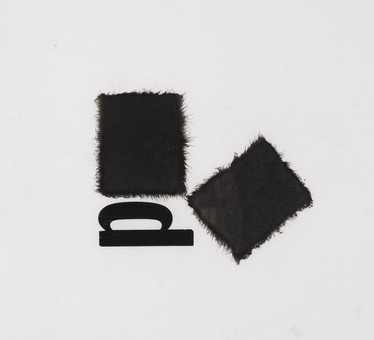Mira Schendel

Zurich, Switzerland, 1919 —
São Paulo, Brazil, 1988
Mira Schendel’s work explores the opposites of chaos and order, sensoriality and rationalism. From 1949 to 1964, Schendel worked with painting, moving in the mid-1960s to monotypes on Japanese paper, whose translucency allows reading on both sides and which, pressed between acrylic plates and hanging from the ceiling – the Graphic Objects – release the work of the wall. When he folds and ties Japanese paper to make Droguinhas, from 1964, Schendel gives an almost transparent volume and texture: knots in the paper show the potential for condensation of what is almost invisible. Poetry is translated into letter risk; the sentence is read and the materiality of the line is read, in text and texture. As articulated by the critic GuyBrett, Schendel intertwines words of the same etymology – fabric, textile and text.
Artist and thinker, Schendel’s work seems to formulate concepts in a gradient of materiality that goes from the crust to the transparency, from the earth’s grain to the gold leaf, from the word representation to the diaphanous of the unrepresentable, demonstrating the various forms of love for wisdom and the possibility of thinking through the interaction of the body with matter: aisthesis.
What is an art gallery? - Peter Cohn
Peter Cohn, founder of Dan, narrates this video with works by Mira Schendel, Lygia Clark and Amilcar de Castro.
Women Ahead
It's never too late to pay homage to women. On the last day of March 2020, Dan Galeria presents the collective Mulheres à Frente, bringing together Brazilian artists of extreme relevance and participation in our history of art.
Exhibition "Line, Color and Movement"
We present Line, Color and Movement. Dan Galeria's new online collection exhibition.